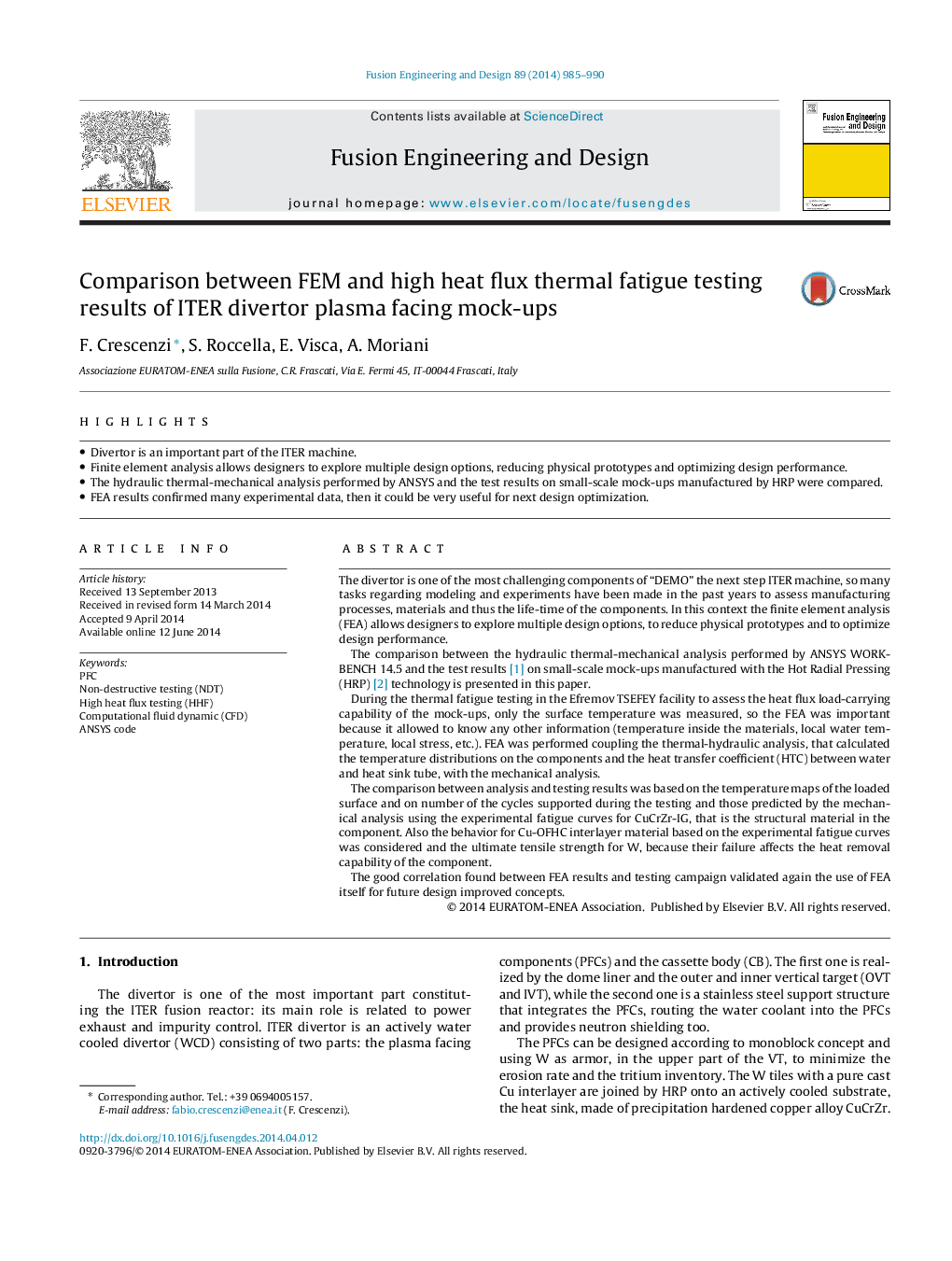| Article ID | Journal | Published Year | Pages | File Type |
|---|---|---|---|---|
| 271165 | Fusion Engineering and Design | 2014 | 6 Pages |
•Divertor is an important part of the ITER machine.•Finite element analysis allows designers to explore multiple design options, reducing physical prototypes and optimizing design performance.•The hydraulic thermal-mechanical analysis performed by ANSYS and the test results on small-scale mock-ups manufactured by HRP were compared.•FEA results confirmed many experimental data, then it could be very useful for next design optimization.
The divertor is one of the most challenging components of “DEMO” the next step ITER machine, so many tasks regarding modeling and experiments have been made in the past years to assess manufacturing processes, materials and thus the life-time of the components. In this context the finite element analysis (FEA) allows designers to explore multiple design options, to reduce physical prototypes and to optimize design performance.The comparison between the hydraulic thermal-mechanical analysis performed by ANSYS WORKBENCH 14.5 and the test results [1] on small-scale mock-ups manufactured with the Hot Radial Pressing (HRP) [2] technology is presented in this paper.During the thermal fatigue testing in the Efremov TSEFEY facility to assess the heat flux load-carrying capability of the mock-ups, only the surface temperature was measured, so the FEA was important because it allowed to know any other information (temperature inside the materials, local water temperature, local stress, etc.). FEA was performed coupling the thermal-hydraulic analysis, that calculated the temperature distributions on the components and the heat transfer coefficient (HTC) between water and heat sink tube, with the mechanical analysis.The comparison between analysis and testing results was based on the temperature maps of the loaded surface and on number of the cycles supported during the testing and those predicted by the mechanical analysis using the experimental fatigue curves for CuCrZr-IG, that is the structural material in the component. Also the behavior for Cu-OFHC interlayer material based on the experimental fatigue curves was considered and the ultimate tensile strength for W, because their failure affects the heat removal capability of the component.The good correlation found between FEA results and testing campaign validated again the use of FEA itself for future design improved concepts.
